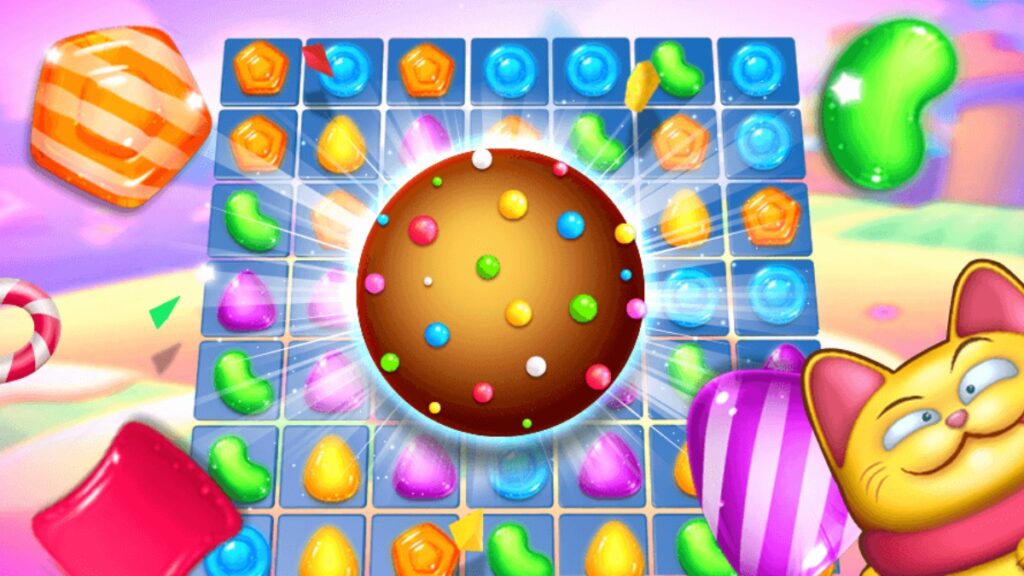Casual games, those dopamine drops on our smartphones, have transcended the realm of leisure to become an integrated part of our daily routines. Unlike their more demanding console cousins, casual games require no elaborate setups or time commitments. They’re readily available, instantly engaging, and offer a surprising level of satisfaction in stolen moments throughout the day.
Casual games as everyday companions
Shreya is a busy marketing professional. Her morning begins with a quick level on Candy Fiesta while waiting for her coffee to brew. During her lunch break, she tackles a Hindi cinema quiz, her mind pleasantly engaged as she munches on a salad. Later, on the train ride home, she fits in a round of Sudoku Classic, the familiar brain teaser providing a comforting distraction from the day’s stresses.
Shreya’s routine isn’t unique. Casual games have become the soundtrack to our moments of downtime, offering a welcome mental break and a touch of friendly competition, all within the confines of a smartphone.
Social and cultural impacts
The integration of casual gaming into daily life extends beyond individual pastimes, influencing social interactions and cultural norms.
Social aspects that allow players to connect with friends and family are frequently included in casual games. Where physical distances might be a barrier, multiplayer options, leaderboards, and social media integration promote a sense of community and competition.
The widespread adoption of casual gaming has significantly contributed to its acceptance as a mainstream activity. The stigma attached to gaming has decreased as a result of this cultural shift, and more inclusive and diverse gaming experiences are now possible.
Not just an urban phenomenon
Contrary to popular belief, the rise of casual gaming isn’t confined to major metropolitan areas. Tier 2 and tier 3 towns, particularly in developing countries, are witnessing a surge. India, for instance, has almost 550 million gamers, with Uttar Pradesh emerging as the top destination for mobile gamers in the country. Within Uttar Pradesh, cities such as Kanpur, Varanasi, and Allahabad have the highest share of gamers.
The allure of a casual gamer
For advertisers, the casual gaming landscape presents a goldmine. With over three billion casual gamers worldwide, this demographic transcends not just location but also age, gender, and language. They are the most diverse group on the internet, allowing for a level of granular targeting that no other medium can match.
As every second digitally-connected person is a casual gamer, advertisers with all kinds of goals and budgets buy gaming inventory to meet the objective of their campaign – whether branding or performance marketing. Gaming publishers now weave brand messaging seamlessly into the game experience, allowing brands to tell their stories interactively. For example, a popular racing game might let players unlock special, branded cars, showcasing the power of in-game advertising.
Beyond entertainment: When apps get playful
Recognising their ability to boost engagement, non-gaming apps and websites are increasingly integrating games for their users. Imagine a food recipe app integrating a short casual game that users can play while waiting for the pressure cooker to sound the whistle. Or take a sports app, with a trivia section where users can play a fun quiz on cricket. This playful twist not only reinforces learning but also keeps users coming back for more, improving overall app retention.
Non-gaming platforms (like Paytm, Business Insider, Samsung Internet) that integrate casual games and quizzes, not only enhances user experience but also creates a valuable space for advertisers to connect with a highly engaged audience.
Making a strong case, casually
In the grand tapestry of modern life, casual games have emerged as unexpected yet indispensable threads. They’ve woven themselves into the fabric of our days, offering respite, stimulation, and even a sense of community. It’s a testament to the power of seemingly frivolous entertainment to shape our experiences in profound ways. As technology continues its relentless march, one wonders if we’re merely at the precipice of a gaming revolution, where these digital diversions become not just a pastime, but a cornerstone of how we learn, work, and connect.
Perhaps the future holds a world where augmented reality overlays interactive game elements onto our physical environment, transforming mundane tasks into engaging challenges. Or imagine a future where neurotechnology allows us to directly interact with virtual worlds through our minds, blurring the lines between reality and gameplay. Exciting!
(This article has been contributed by Gamezop co-founder Gaurav Agarwal and AnimationXpress does not necessarily subscribe to these views.)

